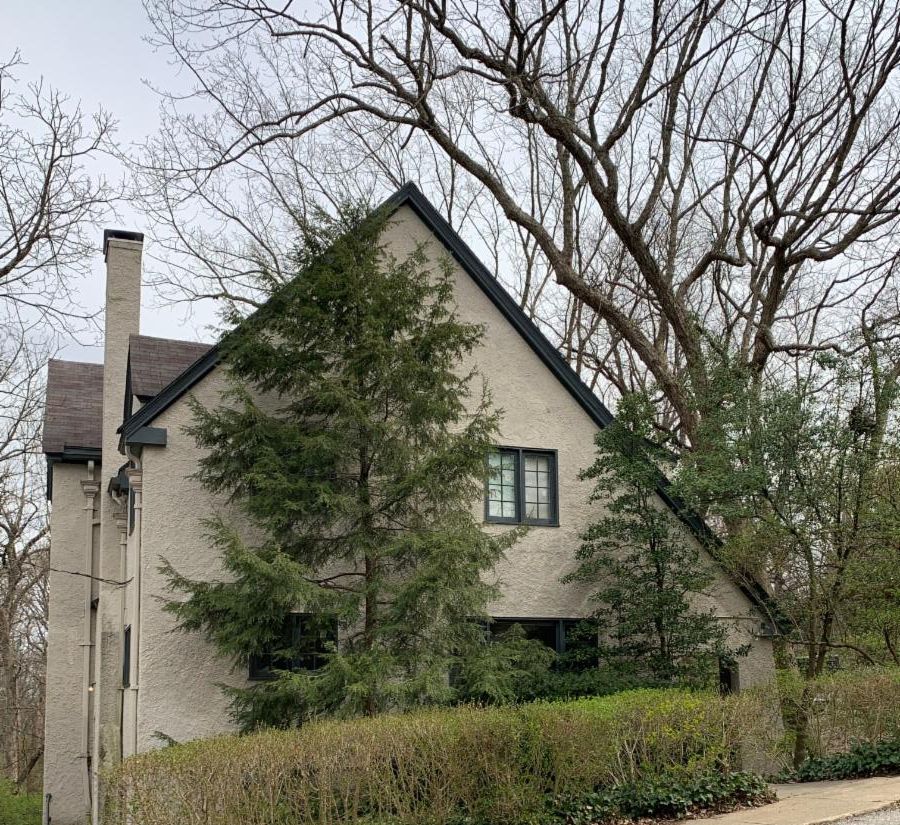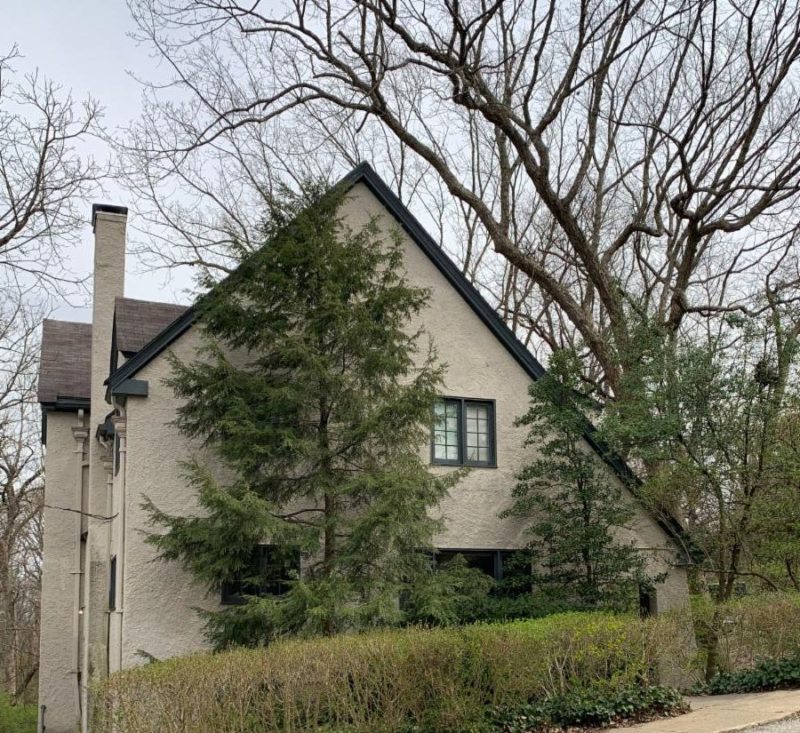Let me introduce, David Tsevat! David was born at Jewish Hospital while his parents lived on 674 S. Crescent and later grew up at 764 Red Bud Ave. His parents pushed him home in a stroller via Harvey and Washington Avenues – his first tour of the neighborhood. Later, he left for college and “exploring” and then returned to his childhood home on Red Bud in 2010, after his parents passed away.

David’s parents, Matitiahu and Miriam Tsevat, married in 1949 in New York, and moved to an apartment on Perkins Ave. in Avondale in 1950. They had limited money and were living on a student stipend while Matitiahu was a student at Hebrew Union College (HUC). David recalls his mother saying, “we came to Cincinnati for two years and ended up spending the rest of our lives here”. Around 1954 they purchased a home at 674 S. Crescent (aka S. Fred Shuttlesworth) and were happy enough there but “criminal elements started coming in and it was not a safe place to live anymore”. Then, one day, in 1963, David’s brother came home bleeding from the head and the family said “that’s it; we’re moving!’, but they didn’t move far.
David’s parents were both European immigrants. They “didn’t get the suburbs”. They wanted a house with excellent quality and close to their work, downtown, hospitals, and community institutions. North Avondale was that place for them. It was also very much a Jewish neighborhood and a center for Jewish life. They bought the house at 764 Red Bud Avenue in the Summer of 1963 and paid between $12,000 – $13,500. It was a time when white-flight was in full swing and in part due to that, as well as the general fashionableness of the suburbs, house prices in North Avondale were quite reasonable. Despite the many changes in the neighborhood, they were comfortable living in an integrated neighborhood. They stayed in North Avondale because they had faith that it was too good to deteriorate.
Growing up in North Avondale in the 1960’s and 1970’s provided a fairly idyllic childhood for the three Tsevat boys. David remembers kids being able to walk up to the corner of Red Bud/Betula/Rose Hill and being able to gather enough friends to play a game: baseball in summer, football in winter and basketball in between. There were “scads of us”, black kids and white kids, and “a lot of bicycles”. No one needed cell phones! They just showed up outside! Kids were not supervised. They were free to go out as long as they came home for dinner. He never saw any mishaps or accidents in all those years! David also remembers sledding on the Avon Fields golf course. Kids would just take the path from behind “the big house” on Rose Hill to the golf course and sled all day. In the summer, they played Little League on the sports fields down on Reading Road near Sugar and Spice restaurant. He also recalls the Clinton Hills Swim Club as being a big part of his childhood as a “daytime playground for many summers”.
A particularly fond memory was watching new cars come down the street. He had a childlike fascination with the golden yellow Avanti (“a really COOL car”), the l968 baby blue Mustang convertible and the 1973 Buick Electra 225 (“where you could land an airplane on the hood”).
While most of the kids went to North Avondale School, David went to Yavneh Day School, but in the l970s this didn’t seem to make a difference in finding kids to play with. (Author’s note: We talked about how in the l990’s most of the kids in the neighborhood (when I had school aged children) went to different schools and perhaps that was why they didn’t hang out in the neighborhood together? Somehow things changed over time, but what caused the change? Different schools didn’t seem to be a problem in the l970s.)
The days surrounding the riots in l968 were “pretty scary”, especially if you were a child at the time. David recalls being told to stay away from the windows (and this was on Red Bud Avenue, which thankfully saw no “action”) and to hide in the basement. The family had a 22” B&W portable TV they WHEELED out to watch what was going on in the city and the world. He recalls burnt out buildings near Rockdale and Reading as evidence of the riots. The kids “knew North Avondale, but not a thing about 2 miles away, like kids do…”
Over the years, he feels that the neighborhood has gotten prettier and nicer aesthetically. Things are kept up better. Houses cost more. Buyers are more affluent. They still seem liberal and diverse, but not as “hippie” like as they once were. Now there are maybe fewer medical people, but still professors and musicians and other professionals for sure. He recalls the l970’s having a looser feel (typical of the era), more wild and fun, but in a responsible way. People could park junky cars on the street and nobody cared. David suggests that the types of people buying in North Avondale in the 1970s might now be choosing other neighborhoods such as Northside or Clifton. (He also mentions that these thoughts could reflect him viewing these times as a child/young adult!) But through it all there always has been an overlap of different types of people.Why does David stay? Well, for one, his house backs up on to the WOODS! It is “nestled in the trees”! The trees come right up to the house. He says, there may be nicer houses in the neighborhood, but none quite have his backyard. In the winter, he can even see through the trees to the golf course and the cars going down Paddock Road. He never had a lawn! (This might have been another reason to play in the street!) North Avondale brings in interesting people, has big trees and beautiful houses. There is intelligence, curiosity and a sense of adventure among people in North Avondale that make them interesting to him. Over the years, David says, “his mom prided herself on convincing countless others to move to North Avondale and, to his knowledge, no one ever regretted it”. He currently lives in (that) house and he don’t regret it either!


